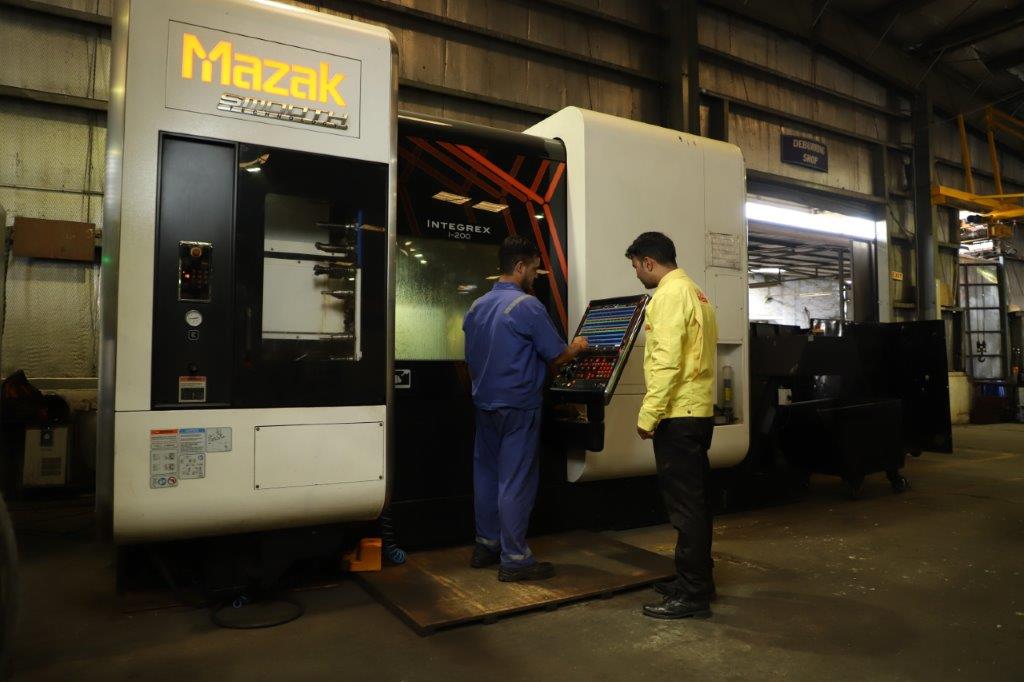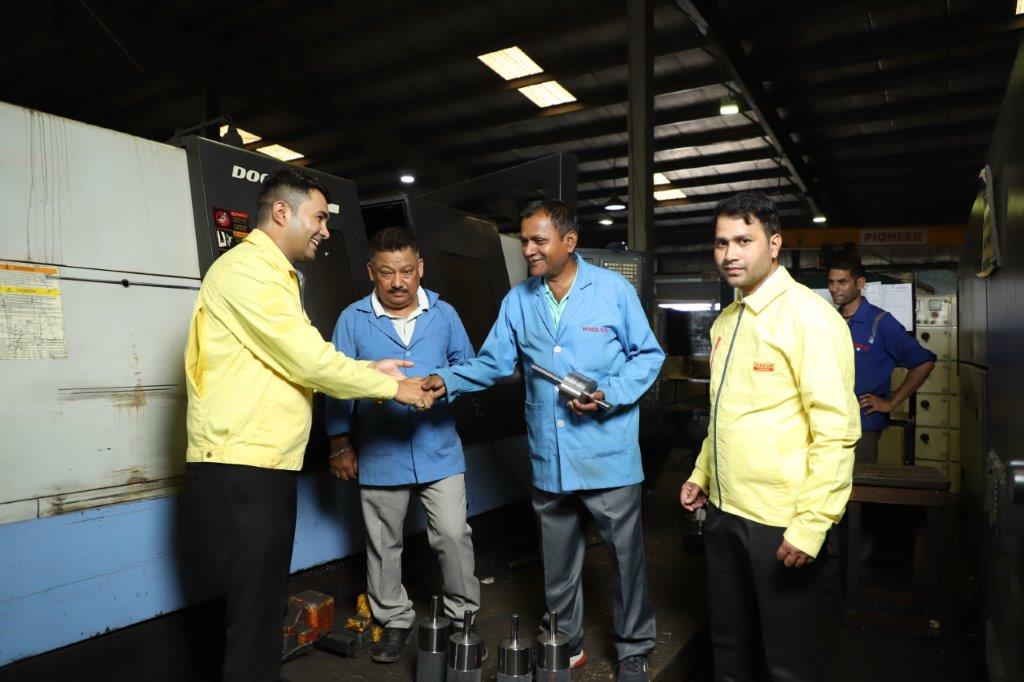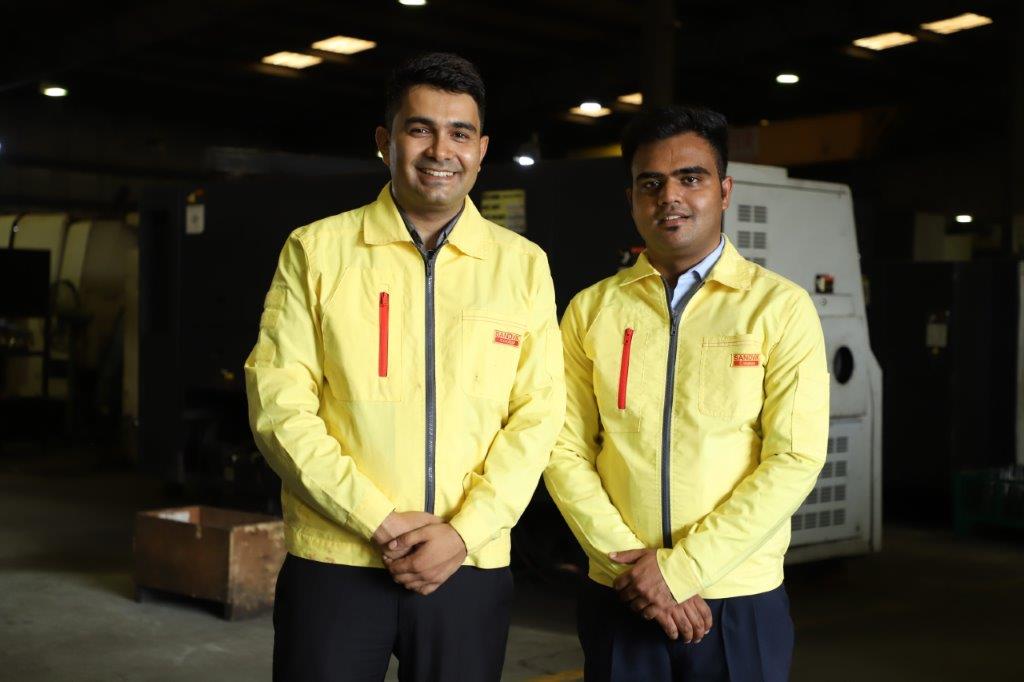Sandvik Coromant and Windlass Engineers Redefine Productivity in Manufacturing

When discussing the future of manufacturing, you may hear talk of ‘closing the loop’. While this might seem like engineering jargon, it often encompasses an end-to-end production approach that results in increased efficiency, less waste, and improved quality. That’s why, when a manufacturer of oilfield equipment, Windlass Engineers, wanted to give its well-established machining strategy a productivity boost, it turned to the metal cutting specialist Sandvik Coromant to help close the manufacturing loop.
Based in Dehradun, the capital of the Indian state of Uttarakhand, situated near the Himalayan foothills, Windlass Engineers is an established manufacturer and distributor of quality oilfield equipment. With a facility spread over ten acres, its 60,000 sq ft buildings house state-of-the-art manufacturing processes. The manufacturer is tasked with delivering a diverse product range that includes high pressure test units, control panels, hydraulic power units, joints, and valves, among many other critical oil and gas components.
As demand for its components increased, Windlass sought productivity improvements—and fast. “We experienced a sudden, but extremely welcome, surge in demand,” explained Atul Bansal, Director, Windlass Engineers. “We needed to address this increase without compromising our productivity. We already had a great relationship with the team at Sandvik Coromant India, so it was a no-brainer to turn to them to help solve our productivity conundrum.”
 Productivity with PIP
Productivity with PIP
Before recommending a machining solution for Windlass’s manufacturing challenge, Sandvik Coromant first needed to identify the customer’s exact pain points.
“Windlass already had many productivity successes,” explained Vivek Sharma, Application Specialist, Sandvik Coromant. “Now, it needed to take that success a step further, to reach production heights it hadn’t experienced before. That’s where Sandvik Coromant came in, to conduct a thorough productivity improvement evaluation and establish the ‘what, why, and how?’ of making that solid foundation even stronger.”
That evaluation is a tried-and-tested Sandvik Coromant service called the Productivity Improvement Program (PIP). PIP is not just about tools but rather a proven, structured process to identify where improvements can be made and help customers implement solutions. As part of the service, Sandvik Coromant specialists look at factors such as workspace design, logistics, set-up processes, and sources of waste—even hidden waste. “Windlass was expecting a minimum 100 percent productivity improvement before investing in a new machine, so we were working towards some big ambitions,” explained Sharma.
 Turning in all directions
Turning in all directions
With the goal of boosting productivity for Windlass’ turning machines and the results of the PIP analysis to draw from, Sandvik Coromant was able to make several recommendations. First, the team introduced Windlass to a radical concept—turning in all directions. All-directional turning moves away from conventional machining methods to introduce a new approach to productivity. To understand this ethos, it is helpful to think first about entering angles.
“Choosing the correct angle between the cutting edge and feed direction is vital for successful turning,” explained Soumik Sarkar, Product Manager, Sandvik Coromant. “It influences chip formation, direction of cutting forces, and cutting-edge length in cut. An angle that’s too high can result in a weak cutting edge, while one that’s too small might cause the tool to rub at high feed rates, causing breakages. Ultimately, getting that entering angle right is the make-or-break for productive turning operations.”
Therein lies the cornerstone of PrimeTurning™, Sandvik Coromant’s unique turning methodology. PrimeTurning™ is a turning strategy where the component enters at the chuck and material is removed in the direction towards the end of the component instead of the conventional way from end to chuck. This way of turning allows for a small entering angle, which provides considerable productivity gains. However, PrimeTurning™ also allows for all-directional turning, which means that conventional turning can be used with the same tools too.
The method also helps keep chip thickness at a constant, whether turning with a constant cut depth or turning contours in the workpiece. Because the width of chips doesn’t change, risk of chip jamming is significantly decreased. “Not only does this allow for more reliable machining operations,” explained Sarkar. “But, additionally, knowing that turning can take place without any incidents could allow manufacturers to step away from their machines and have them run without supervision. It’s the ultimate enabler for productive turning.”
Sandvik Coromant has developed several tools to support the all-directional machining method. This includes the second generation CoroTurn® Prime B-type tool, which the team recommended to Windlass. “A key benefit of this insert is that it’s negative and double sided,” added Sarkar. “Four cutting edges—twice the number of its predecessor—allow for more cost-efficient machining.
“The tool also boasts a new robust tip seat design. This prevents tool breakages should the insert break and enables the shifting of feed directions without insert movements. With the recommendation of all-directional turning, CoroTurn® Prime B-type has proved an excellent companion for Windlass.”
“This combination of productivity solutions worked perfectly for us,” said Abul Kalam, Head - Manufacturing, Windlass. “We needed a flexible turning strategy that allowed for both new ways of thinking and conventional turning. PrimeTurning™ gives us just that—a faster way to reach our productivity goals without losing out on the methods the team is already adjusted to.”
 Tools for turning
Tools for turning
In addition to the inserts, Windlass also required accompanying turning grades. Here, Sandvik Coromant recommended its GC4425 grade for steel turning. Designed for improved wear and heat resistance and toughness, GC4425 allows for high cutting speeds and long times in cut when machining in stable conditions. Designed as a machinist’s first choice for steel turning, GC4425 is shown to outperform the competition in the majority of turning applications, and has demonstrated 90 percent increased tool life in tests.
Even with world-class tools in place, Windlass and Sandvik Coromant had some challenges to overcome. “We were giving the team cutting parameters that were four times higher than those they were previously using,” explained Sharma. “Initially, this was a learning curve, as the component kept coming out of the chuck and we needed to work with the team to resolve that. Thankfully, we were able to work with Windlass to find a resolution without involving any external machine builders.”
Together with Sandvik Coromant, Windlass exceeded its 100 percent productivity improvement goal — five times over. “We came in with high ambitions,” explained Bansal. “But a 500 percent productivity improvement completely blew those goals out of the water. Thanks to a combination of expert consultancy and winning tools, together with smart CAM programming, we’ve taken our shop floor productivity to new heights. Windlass has since placed an order for 200 inserts and four tool holders for mass implementation of the all-directional machining strategy across our site. Sandvik Coromant has truly opened up a world of possibilities to make our production hyper-efficient.”
Reflecting on the results, Sharma said: “We’ve worked with Windlass for a long time, it’s a partnership that spans years. Equally, Windlass has been manufacturing components for over 40 years without many major productivity hurdles. To be able to go in and make an already productive manufacturing process 500 percent better is a real engineering feat. It’s been an eye opener for everyone involved.”
Sarkar shared similar observations, saying: “Working with Sandvik Coromant has helped Windlass close its manufacturing loop. Now, the customer has a complete productivity strategy that reduces material waste and tool breakage, while allowing it to keep up with accelerated demand. We’ve seen a real shift in Windlass’ approach—it is no longer just about cost savings, but the value that can be gained from a whole new way of thinking. That includes new tools and machining methods, as well as the training and support we’ve delivered.”
Closing the loop can sound like manufacturing jargon but, to Windlass, it has brought nothing but success. For a company wanting to take its productivity to new heights, integrating novel machining methods, smart programming, and expert consultation has given its team tools to achieve more than was ever thought possible.
Image Source: Sandvik Coromant




 Facebook
Facebook.png) Twitter
Twitter Linkedin
Linkedin Subscribe
Subscribe